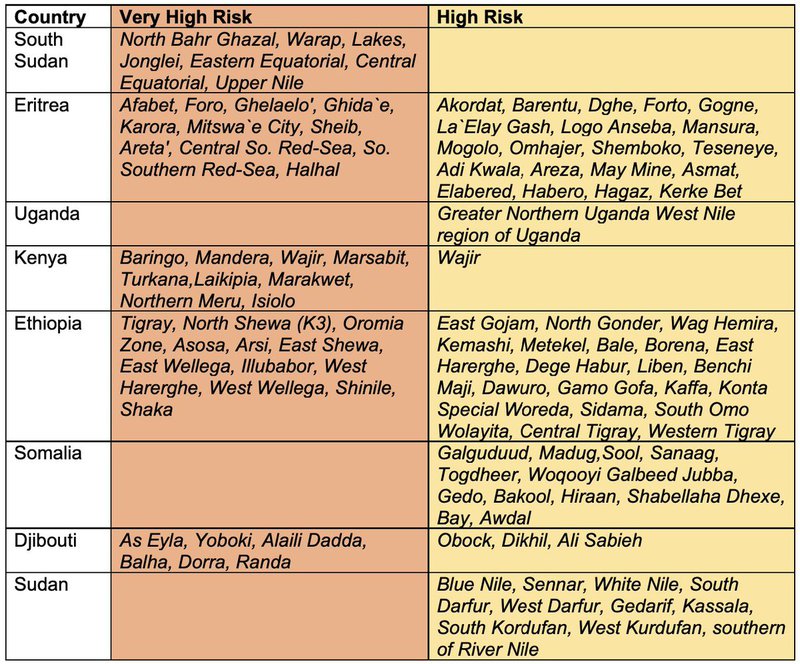Desert Locust Prediction 1-15 May
Climatic conditions continue to be suitable for desert locust development, especially in South Sudan, southern parts of Sudan, western Ethiopia, coastal parts Eritrea, and Djibouti.
Highest risk areas for Desert Locust invasion based on forecasted climate conditions and existing vegetation suitable for an invasion are outlined below:

- The country with most suitable climatic and ecological conditions for invasion is South Sudan. However, ecological conditions (especially availability of green vegetation) are suitable in most of the region due to the high rainfall received, key for vegetation regrowth.
- Wind direction, which greatly determines swarm movement, is forecast to be generally south to northeast in; Uganda, Rwanda, Burundi and Tanzania, leading to lowest risk of an invasion. Forecasted wind direction in northern part of the region is mostly towards north - northeast
- Most of the hoppers reported in late March and April are now young adults and have been reported as swarms in parts of northern Kenya, Ethiopia Oromiya and SNNPR regions, Somaliland, and Sudan’s Agig and Alibai.
- As a result, desert locusts are projected to move from south to northeastern areas of South Sudan, south to central, northern and eastern Ethiopia and from northern Ethiopia to southern Eritrea.
Important
- Locust are currently in non-crop areas. Most crops are in early vegetative stages. So far, rangelands have been the most impacted with noticeable shrubs and woodlands biomass degraded.
- Areas with agro-pastoral farming have the highest risk of desert locusts invading crops. Most of the young adult locusts have begun aggregating to swarms in invaded areas of southern, western and northern Ethiopia.
- Impacts of invasion have been observed on woodlands and shrublands in Kenya’s rangelands. Reduced pasture for browsers has been observed in Laikipia, Samburu, Baringo and Turkana.
